Shopping for vintage and secondhand has many benefits:
- It’s good for the planet, using something that already exists means not having to make a new item, which saves resources and money, as well as not contributing to landfills or garbage dumps around the world.
- Much of the vintage and secondhand items are well made and will hold up for a longer period of time than newer versions.
- You will be able to curate a look of your own that cannot be duplicated. Whether it be home decor, clothing or a collection of tools, no one will have exactly the same items you do.
- This point is often the genesis of shopping vintage and secondhand: in most cases it’s cheaper than buying new.
- Lastly, shopping for vintage and secondhand can be fun. It’s a great way to spend a day out with friends or family, finding new surprising items to bring home or to give as gifts.
There are so many ways to shop, you’re sure to find a few that suit your fancy. Where you shop for vintage or secondhand items makes a difference. Each type of venue or shop will have a different price point, style, and vibe with its own set of norms. Here are some standard practices to get you started.
In Person Shopping
When shopping in person, cash is king, although more and more vendors are accepting payments via apps such as Paypal, Venmo, or Zelle.
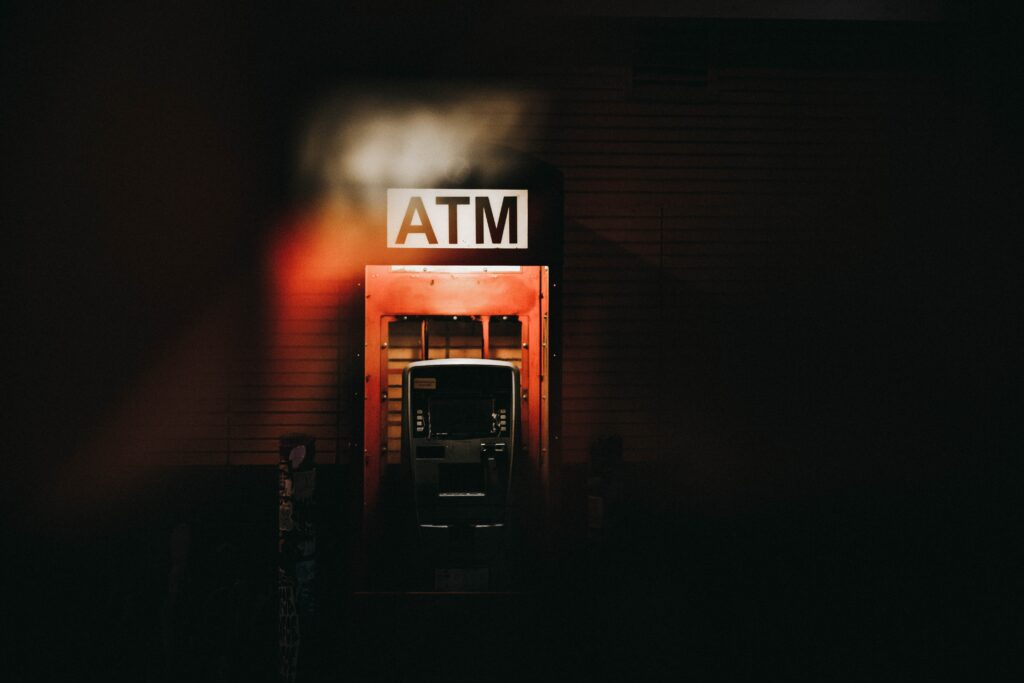
Flea Markets: Flea markets often have an entrance fee and are most often curated, meaning the vendors must be vetted prior to selling, similar to an art show. Each dealer may have a specialty or defined look. Often there is a mix of new and vintage items. Pricing reflects the curation and vendors tend to stock better quality items.
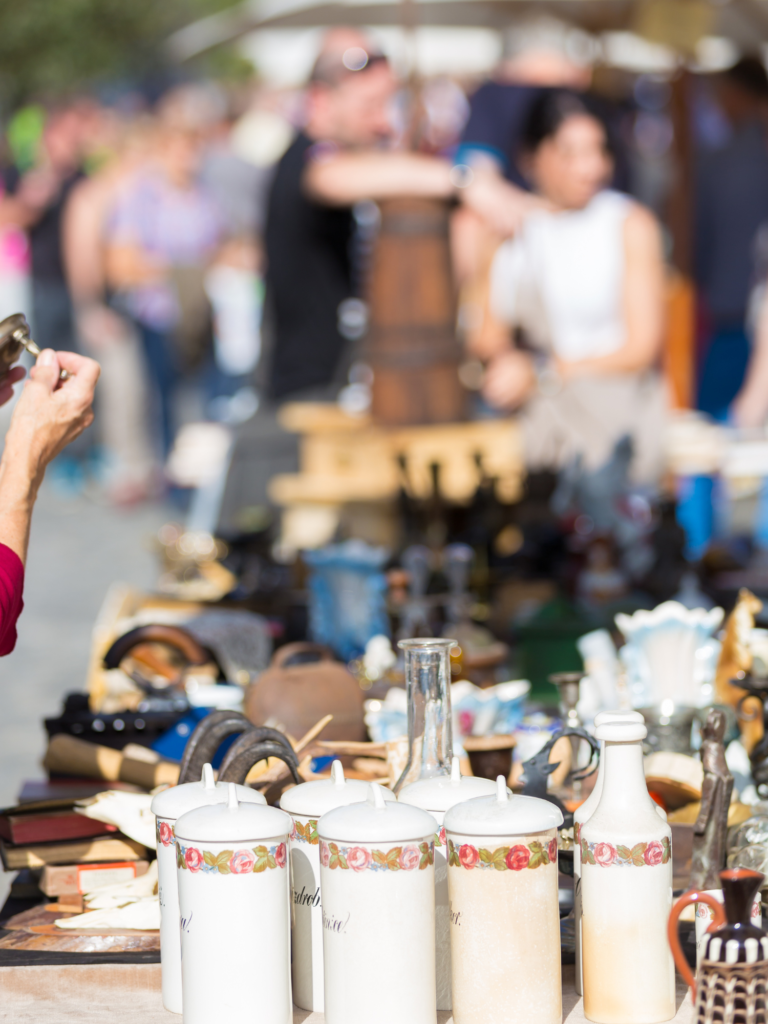
Swap Meets: Swap meets tend to have a mix of both new and old items. Anything from used tires to new clothing to fresh produce. Prices tend to be lower and reasonable haggling is most often acceptable. Shopping swap meets takes time and patience as you may need to dig for items.
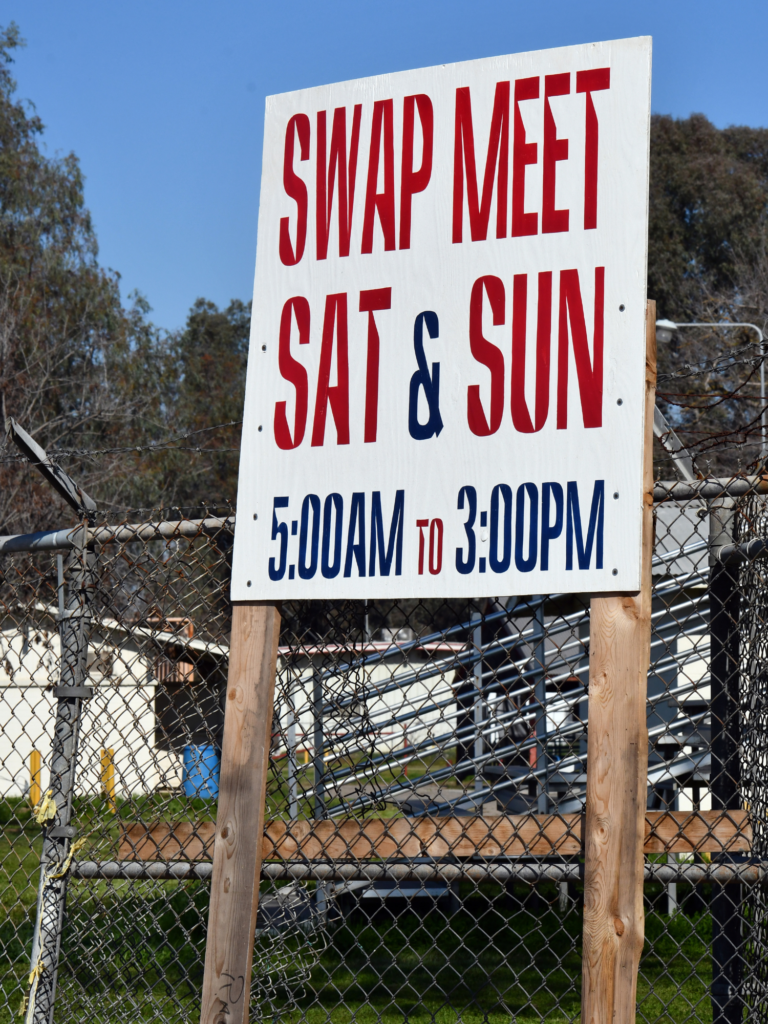
Estate Sales: Estate sale shopping is a good way to find a variety of items as you’re most often shopping in someone’s home. You’ll find everything from cleaning supplies to clothing and furniture. Pricing varies based on location, quality of items as well as the expectation of the client. With estate sales, chances are if the items in the home match your personal style you may come away with multiple items. Some estate sales are cash only, although many now take credit cards or app payments as well, although there may be a minimum charge.
Thrift Stores: Thrift store shopping can be hit or miss. Their inventory is dependent upon donations. Some thrift stores do a better job of curation than others and often pricing is reasonable. Many thrift stores have discount days so look for those. The inventory can be very eclectic as donations come from a variety of places. Some thrift stores do not carry specific items such as furniture or jewelry. Most national thrift stores also have online outlets where you can purchase items. Many sell jewelry online in bulk.
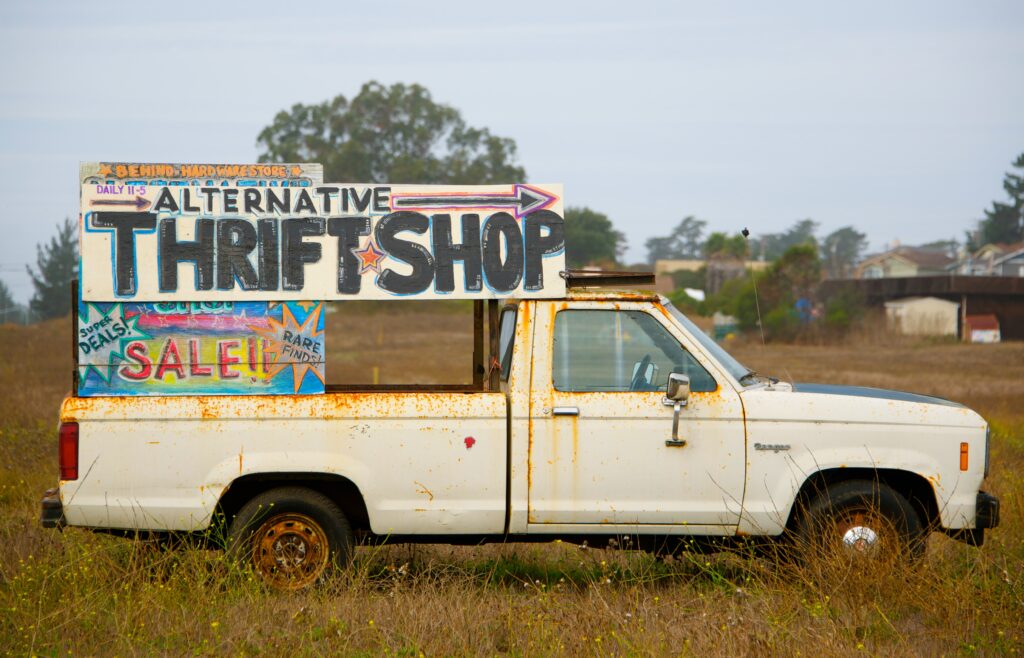
Garage/Yard Sales: Garage sales and yard sales have a narrow variety of items although prices are often very low. They tend to happen only on weekends and are most often busier in the early mornings. Cash is almost always required.
Rummage Sales: Rummage sales held by churches or community centers, or schools are often a grab bag of household items and crafted goods. Pricing is often relatively low, but keep in mind the proceeds are going to support the organization holding the sale.
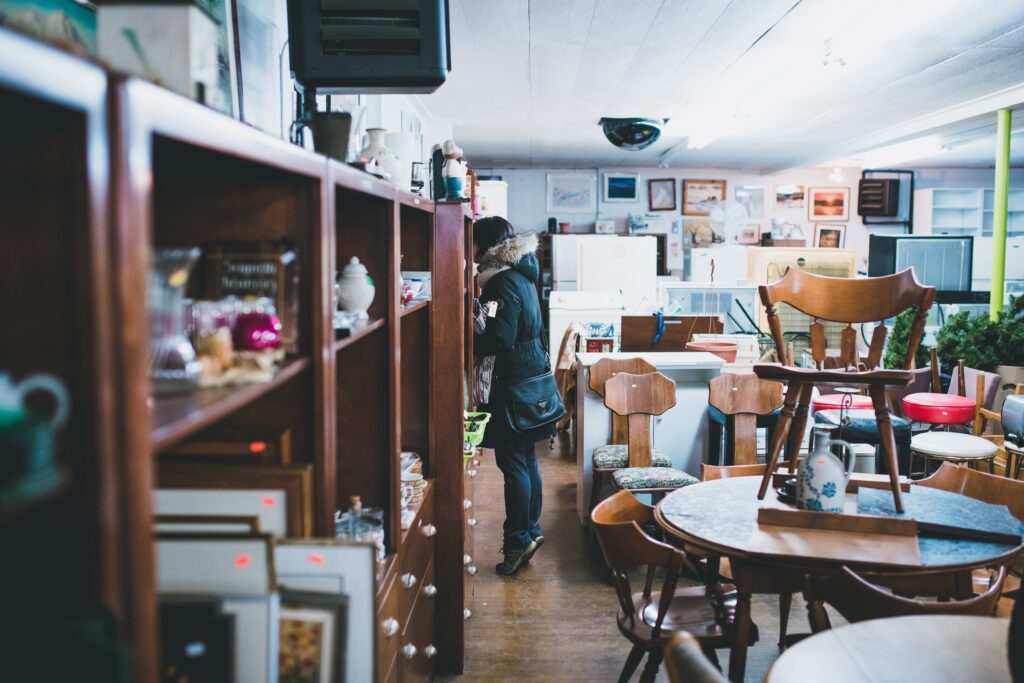
Auctions: Auctions are one of the in-person ways to shop that has gone online since Covid. Many auction houses still have in-person live auctions, although more have switched to online only. Auction houses will often put out a digital catalog of items for perusal prior to auction day.
There is often a minimum dollar amount bid required. Auction houses also have both a buyer’s premium as well as a seller’s fee. So keep in mind as you bid that you will need to pay both the willing bid price as well as a buyer’s premium and possible shipping charges.
Auction inventory can range anywhere from farm equipment to antique furniture and new cell phone cases to old studio props. Prices often start out low, but due to moving online can often go quite high. Many auction houses specialize in specific categories such as art, vehicles, or equipment.
Online Shopping
Online shopping is best when you have something specific in mind. With online shopping, you can find everything from rare and expensive antiques to cheap knockoffs. Of course, online shopping requires payment via credit card in most cases. With updated banking regulations, shopping online can be much safer than sending a check in the mail. Keep in mind that online shopping may also include shipping costs and sales tax. You will also have to be patient as shipping often takes time.
Getting lost in the rabbit hole of eBay, Etsy, Ruby Lane or another multi-vendor site can be overwhelming. Though the benefit of multi-vendor websites is that you can easily compare items and pricing. Some sites allow for minor haggling although asking for large discounts is frowned upon.
eBay: eBay is the granddaddy of online shopping. You can buy everything from a car to rubber bands. Keep in mind that many of the vendors may be in other parts of the world and shipping costs and time can vary greatly. This also means you may be able to find items not sold locally. eBay is known for strict vetting of high-end name brand merchandise. Knock-off items are highly discouraged and must be clearly marked as such.
Etsy: Etsy originally was a marketplace for handmade and vintage items only. It has since expanded to sell almost anything. Beware of knock-off items and copyright infringement.
Ruby Lane: Ruby Lane is a “vintage and antique only” multi-vendor site with a good reputation for quality goods. Many of the sellers have been on the site for years. The sellers must be pre-screened and meet a set of quality guidelines.

Tias: While not as well known as Ruby Lane, Tias (The Internet Antique Shop) is also a multi-vendor antique and “vintage only” site. Many of the sellers also have brick and mortar shops.

Mercari: Mercari is a Japanese company that expanded to the U.S. allowing sellers and buyers to easily conduct business via their phones. While not strictly offering vintage and secondhand items, they can be found here.

Poshmark: Poshmark is a social commerce multi-seller site created to buy and sell secondhand clothing and accessories. The audience tends to be younger and more socially engaged on the platform than many others. The site encourages contact with sellers and hosts Posh Shows highlighting various specialties, such as purses, holiday-themed items, or specific designers.
Chairish: Chairish offers a curated selection of high quality furniture and home accessory inventory from a variety of sellers. Prices are often higher than other sites due to the white glove service the company offers and its high level of standards. If you are looking for unusual, or one-of-a-kind designer items for the home, Charish may be your spot.
 One Kings Lane: Selling both new and vintage furniture and home decor, One Kings Lane not only offers furniture and accessories but also has design services as well.
One Kings Lane: Selling both new and vintage furniture and home decor, One Kings Lane not only offers furniture and accessories but also has design services as well.

I’m sure there are many other sites that I’m leaving out. There are multitudes of shops of all sorts popping up all the time and it would be impossible to list them all here.
Independent Websites: Many sellers of both vintage and antique items started out selling either in brick-and-mortar shops or on multi-vendor sites. For various reasons, a great number of them have ventured out on their own. The freedom to run a shop as you choose and have complete control is quite appealing to many sellers. Often the only form of advertising is social media, although several sellers have also created blogs (cough, cough) or podcasts.
Freestanding websites sell everything from furniture to jewelry, household items to clothing. Virtually every era is covered as is every style. Quite a lot of these sellers also have more than one outlet from which they sell, some online, others in person. Although finding freestanding sellers can sometimes be more difficult to find, we encourage you to shop with them as they are often solo entrepreneurs and run their often home-based businesses on their own. Supporting small businesses is yet another way toward sustainable shopping.
Other Clothing and Accessories Sites: These sites do not specifically cater to vintage although they do sell large amounts of secondhand goods. Most are newer items, many are gently used. Some specialize in designer items such as The Real Real, and Vestiaire, while others such as Thred Up and Depop offer lower priced more casual clothing and accessories. Keep in mind there are literally hundreds of resale and secondhand sites, some are worldwide, some regional, and some local. There are also many free and swap sites as well.
Social Media Shopping: Social media shopping (peer to peer) shopping is a relatively new way to shop directly via a social media app. Facebook Marketplace is the 10,000 lb. gorilla of the bunch, where shoppers can buy and sell just about anything locally. Some sellers are willing to ship as well. Instagram and Tik Tok have gotten into the game as well ,with most sellers opting to ship items. Whatnot is a newer social selling platform with live auctions. Many vintage sellers have reported good feedback from buyers on the site.
If you are not sure where to begin shopping for vintage and secondhand items or are overwhelmed by the choices, there is now a browser extension and app that can help you search for vintage and secondhand clothing and accessories. Beni is a relatively new company that works similarly to coupon sites, in that it pops up when you search for an item if it finds the same or similar item available on the secondhand marketplace. The company is looking to expand and encourages feedback.
The bottom line is just about anything you can buy new, you can buy secondhand for less. Shopping vintage and secondhand gives you the advantage of purchasing quality items on a budget. Because we live in a consumer-driven economy there will always be more than enough out there for everyone. By being conscious of what we buy and use, we can make a difference in the amount of things that are thrown away each day. Diminishing the amount of resources used in manufacturing new items helps our planet and allows us to live a more sustainable life. Shop and buy vintage and secondhand and save our planet for the next generations.
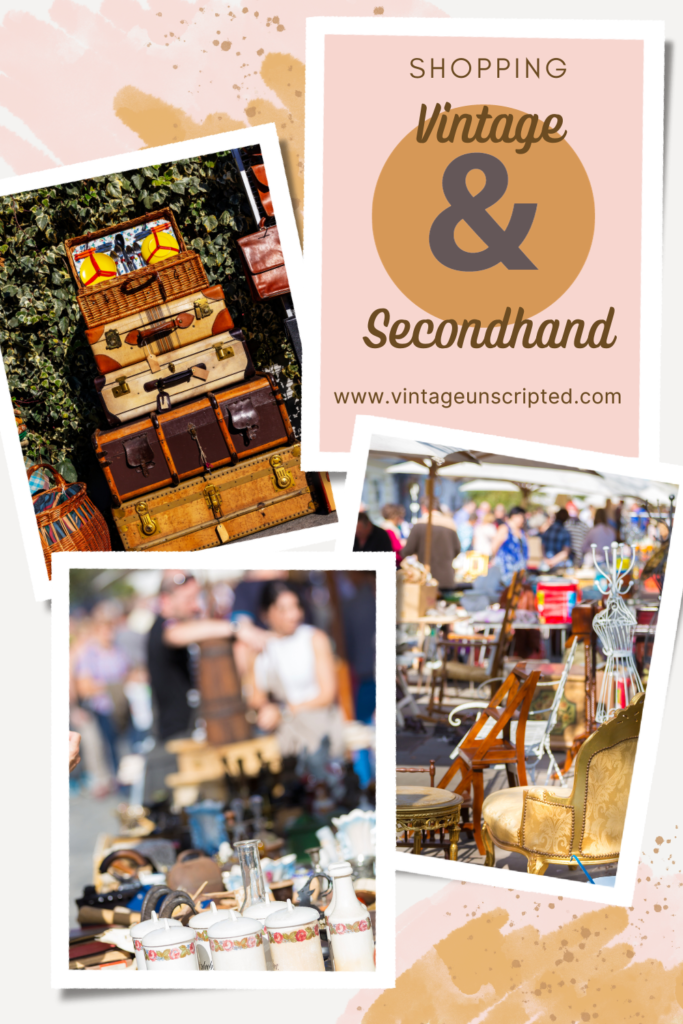

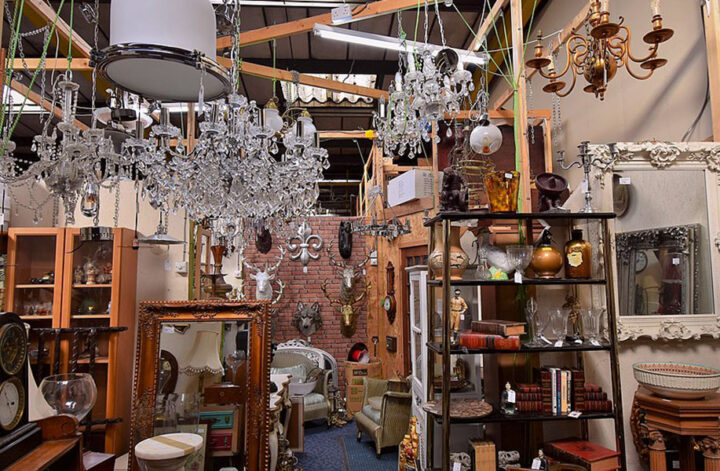












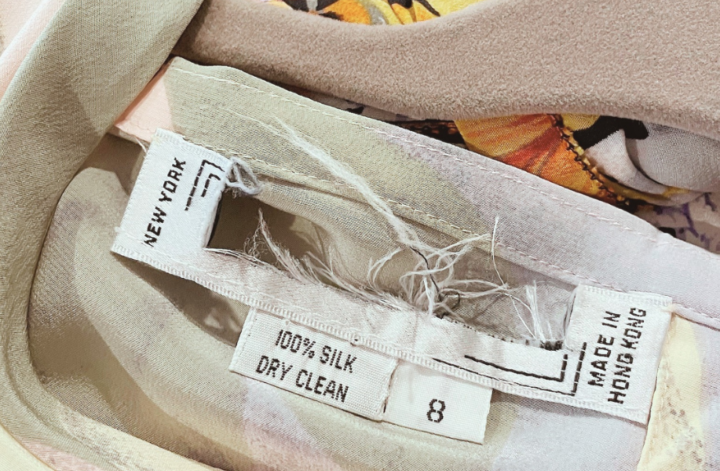


1 comment
Thrift stores have become havens of big box overstock. The popup vintage monthly shops in my area are best bets for quality sourced items at a fair price.